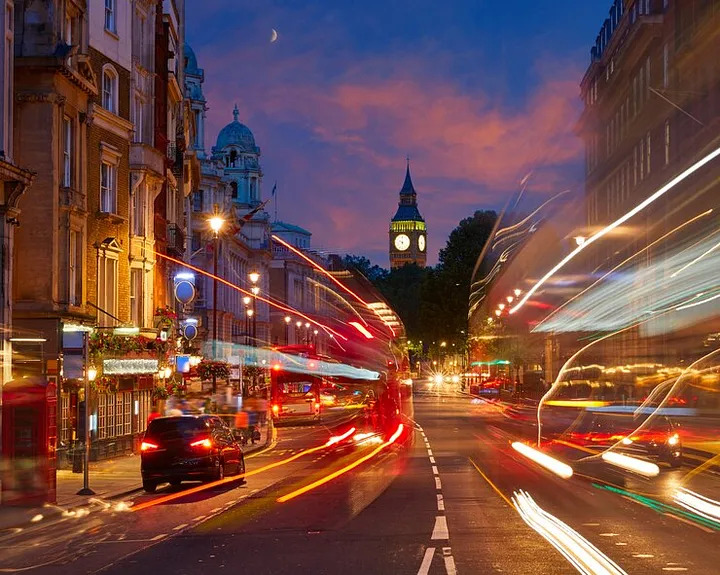Desolation of High Streets ruins town life

Family businesses, vital to the UK’s private sector, represent 88 percent of all private companies, crucially contributing to the nation’s socio-economic fabric. As observed globally, these enterprises are often resilient, driving growth even amidst economic adversities. A report by the Institute for Family Business (IFB) highlights family-run businesses in the UK generated £1.7 trillion in turnover, employed 13.9 million people, and contributed £575 billion in gross value added (GVA) to the UK GDP. Similar trends are evident worldwide: family enterprises constitute 90 percent of private entities in the UAE, 88% in Germany and Switzerland, 80% in Canada, and 67% in Australia, though proportions vary elsewhere. These businesses are more than economic contributors; they’re the pulse of local communities and the essence of high streets, enriching the lives of residents. Viewing cities as living entities, one might consider the high street the heart, with family businesses serving as the lifeblood sustaining it.
While the image of a family business often conjures thoughts of quaint local shops run by generations, the reality is these enterprises have a spectrum that extends from humble origins to global powerhouses. Several family businesses have blossomed from modest beginnings to international prominence:
– Abdul Latif Jameel Company, initially a modest vehicle distributor in Saudi Arabia, has, over decades, transformed into a prominent global entity.
– JCB, birthed in a garage in 1945, has burgeoned under familial stewardship into one of the UK’s industrial titans.
– Panda Express, started by a couple in the US, has expanded from a small eatery in 1983 to boasting over 2,200 locations globally as of 2023.
– Samsung, founded as a small trading company in 1938, has grown exponentially, with Lee Kun-hee and his family transforming it into a multinational conglomerate critical to South Korea’s economy.
These examples underscore the potential of family businesses to scale dramatically, reshaping economies and communities in their growth trajectories.
While the exponential growth of certain family enterprises is remarkable, it’s the smaller, local family businesses that often form the crux of community well-being. Specifically, the brick-and-mortar stores lining the ‘High Streets’ of British towns, or the ‘Main Streets’ internationally, serve as the pulse of local life. These independent shops, with their distinctive charm and specialized offerings, provide more than just goods; they offer personalized experiences, a showcase for global niche brands, and a community hub. From fashion to books, art to homeware, these enterprises enrich the local economic and social landscape.
Unfortunately, the vibrancy of these high streets is a fading reality in some areas, indicative of broader social and economic issues. Alexander George Rowlinson, a 25-year-old independent language expert, recounts the decline of his hometown, Stockport. He laments the loss of a once-bustling hub where family members from various locales would converge, social bonds were nurtured, and unique, quality products were accessible. The high street was once a cornerstone of daily life, fostering social interactions and supporting youthful ambitions and activities.
The diminishing health of these high streets doesn’t just signal economic decay but also marks a decline in communal spaces that once catalyzed social engagement and opportunity. The erosion of these communal nexuses can prompt younger generations to depart in search of greener pastures, further depleting the town’s vitality. This underscores the need for rejuvenation strategies aimed at restoring the economic and social dynamism of these quintessential spaces. For instance, initiatives like the UK government’s “Future High Streets Fund,” launched in 2021, aims to renew and reshape high streets, emphasizing their importance in revitalizing local communities.
Alexander’s observations paint a bleak picture, with once-thriving high streets now marred by empty storefronts and an influx of low-end shops. This decline isn’t just cosmetic; it has serious social ramifications, from increased youth delinquency to a pervasive sense of community despair. It’s driving the younger generation, who feel stifled creatively and professionally, to seek opportunities elsewhere. A study by Reebok and MTV underscores this, indicating a significant youth exodus towards metropolitan hubs or abroad, with those remaining feeling constrained by their hometown’s diminishing prospects.
This stagnation became particularly pronounced following the 2008 financial crisis. Family businesses, already weathering economic hardships, were ill-prepared for the blow dealt by the recession between 2007 and 2010. The situation was exacerbated by the meteoric rise of online retail, which offered consumers a more economical and convenient shopping alternative. By 2018-19, online sales had claimed a substantial market share, oscillating between 18% and 19%, according to the ONS (2022).
The COVID-19 pandemic accelerated the shift to e-commerce, with online retail sales peaking at 37.8% during the pandemic and stabilizing at 26.9% of all retail sales in the UK by August 2023. High street shops face ongoing challenges, but the UK government is allocating £830 million from the Future High Streets Fund to aid 72 areas, focusing on infrastructure improvements, new housing, and revitalizing underused spaces. There’s also a long-term plan to transform high streets. However, the cost of living squeeze and reduced government support may strain retail in 2023. To support small businesses, “shop local” initiatives and grants are emphasized, part of efforts to balance e-commerce growth with high street revival. This depicts a dynamic retail landscape shaped by changing consumer behaviors and government policies.
The surge in online shopping wasn’t just a boon for digital-only retailers like Amazon and eBay; traditional brick-and-mortar stores with online platforms, including Next, Tesco, Walmart, Argos, and Marks & Spencer, also saw significant growth in their digital sales.
The onset of the pandemic in 2019, trailed by a harsh recession and inflation, propelled a remarkable shift towards e-commerce. The data suggests that the share of online retail in the market soared, reaching a peak of 37.8% amid pandemic-induced store closures, and accounting for over 26% of all retail sales in Great Britain as of June 2023. The iconic retail hub of London, Oxford Street, witnessed a drastic dip in total retail sales, from an estimated £10 billion pre-pandemic to a mere £2 billion during 2020. Although a modest recovery to £5 billion was noted in 2021, the toll of COVID-19 on brick-and-mortar outlets was palpable. As of 2023, positive strides have been observed, with the rateable values on Oxford Street retail units dropping by 36.6% on average.
Ismaeel Ali, the head of the family office & CEO at ASG and a guest speaker at the Global Investment Leaders Club, lamented the demise of the high street’s social aspect. The pandemic expedited the transition to online shopping, he observed, even for those previously resistant or unfamiliar with the technology. The convenience of online shopping has now diminished the appeal of visiting physical stores, particularly for residents outside of London. This shift has left many family businesses unable to justify the costs of retail space, given the migration of sales to online platforms. Ali stressed the need for government intervention to revive the high streets and provide support to these traditional businesses.
The landscape of high streets has undergone significant changes over the past quarter-century, marked by extensive redevelopment and the construction of new retail spaces. However, the efficacy of these developments in revitalizing town centers remains debatable. A case in point is Redrock Stockport, a leisure complex built at a cost of £45 million, which rather infamously earned the title of Britain’s ugliest building in 2018. Despite the influx of new structures, including a large office center and an expanded car park, Stockport’s high street is now predominantly occupied by beauty salons, pawn shops, and discount stores—a far cry from a thriving local economy.
The challenges extend beyond online competition; large corporations and supermarkets, with their aggressive pricing strategies, have significantly undermined independent retailers. The convenience these mega-retailers offer often outweighs the personalized service and potentially higher quality available at independent stores. For instance, consumers now commonly purchase lower-quality flowers from supermarkets while doing routine shopping, bypassing specialty florists that once were a high street staple.
Speaking at the Global Investment Leaders Club’s gathering, Jude Pereira, Managing Director at Nanjgel Solutions and a key figure in UK initiatives to save small businesses, highlighted the global shift in urban commercial ecosystems. He emphasized that small and family-owned businesses must innovate and adapt to the current commercial climate rather than resisting it. The future, Jude Pereira suggests, lies in these businesses forming their own tight-knit ecosystems to maintain relevance and competitiveness in a market increasingly dominated by large corporations and online shopping platforms.
The decline of high streets represents a critical issue with global implications, affecting not just the UK but countries around the world. The vitality of these commercial centers and the prosperity of family businesses are closely tied to the overall health of urban environments and the well-being of their inhabitants. Stakeholders, from everyday citizens to investors and business professionals, are acutely aware of the social repercussions stemming from this downturn. However, awareness alone doesn’t equate to resolution. It’s imperative to ask whether this collective concern is sufficient to prompt decisive action and meaningful change. The onus is on all parties to not only acknowledge the issue but also actively engage in solutions. What’s your perspective on this pressing matter?





